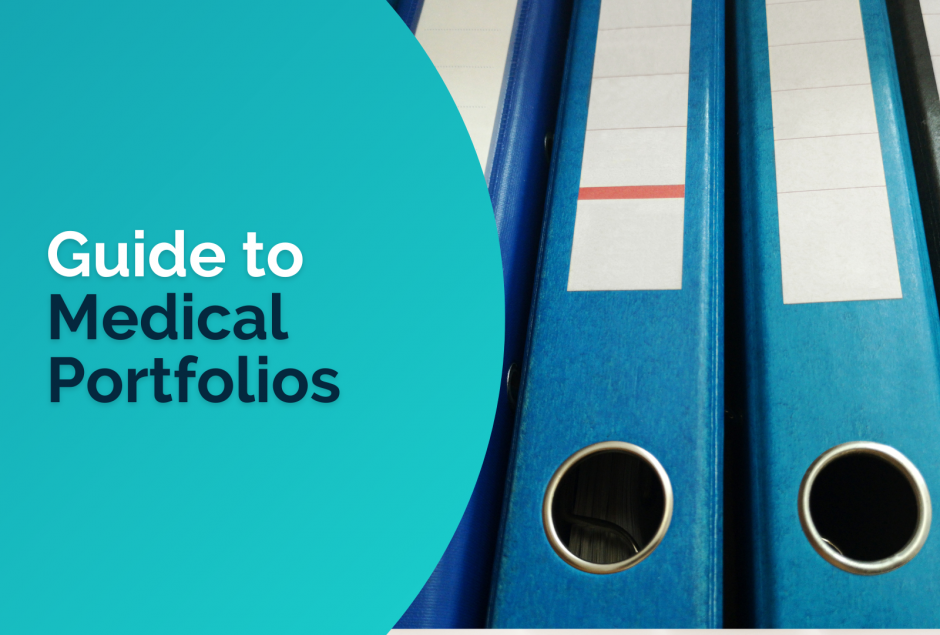 Menu
Menu
 Menu
Menu
Is your medical portfolio up to day? Find out how to improve it and secure a new role today!
In the world of medical professionals, a General Practitioner (GP) medical portfolio isn't just a collection of documents; it's an extension of you and your CV. It serves as an essential tool in showcasing your accomplishments, competencies, skills and indeed supporting your career developments. It is imperative to get this set up, keep up to date and utilise as a guide through interviews.
The medical portfolio isn't just a bundle of papers; a well-maintained portfolio provides employers with insight into your experience, preparation, accolades and scope of practice. Your medical portfolio helps you to market yourself better when applying for jobs; as well as being an amazing talking point to have during an interview situation! It helps employers understand your abilities as it showcases your clinical expertise and skills. This in turn helps them determine whether or not you would be a good fit for their organisation.

A medical portfolio is an essential companion to your job interview
A well-structured medical portfolio acts as a vital companion to your job application, and showcases key elements that highlight your medical journey. Here's a step-by-step breakdown of what your portfolio could include:
Set the tone of your portfolio, and keep your documents organised and easily accesible.
Your portfolio's introduction should feature an up-to-date CV and cover letter.
Include your personal information, address, and contact details. Also, consider adding occupational health records.
Highlight your educational journey, showing your degrees, university attendance details, and university affiliations.
Showcase any additional qualifications or areas of expertise you've achieved.
Provide proof of your IMC annual retention certification, establishing your professional credibility and eligibility to practise.
Be sure to include proof of indemnity insurance to practice.
Showcase your commitment to staying current in your skills and knowledge by highlighting certification cards such as BLS, CPI, etc.; HSEland certs; patient moving and handling; and other such certificates.
Include a description of your work experience to date. If you’re newly graduated you can use this section to share details of your clinical experience or internship.

Your portfolio should be professionally presented, in a three-ring binder
If you won any awards as a nurse; are a member of any healthcare committees; have done volunteer project work; or do anything extracurricular that can reflect positively on you as an employee, this can go here. For example, if you teach first aid, have done volunteer work abroad, or are part of a sporting club which demonstrates teamwork capabilities, put proof of this in here. You could also add a picture!
Detail any teaching engagements, underscoring your role as a mentor.
Share examples of professional or scholarly work such as articles or research, that adds depth to your professional identity.
Optionally, provide contact information for references who can vouch for your abilities.
It’s a good idea to organise your portfolio using a three-ring binder. You can develop a timeline of your career by adding documents in chronological order, and include a table of contents to make it easier for people to find what they are looking for.
When putting together your portfolio, it’s important to remember a few different points:
If you are interested in putting together your medical portfolio today and want to find out more, please feel free to contact us at Clarity where a dedicated recruitment consultant will be on hand to guide you through this process.
